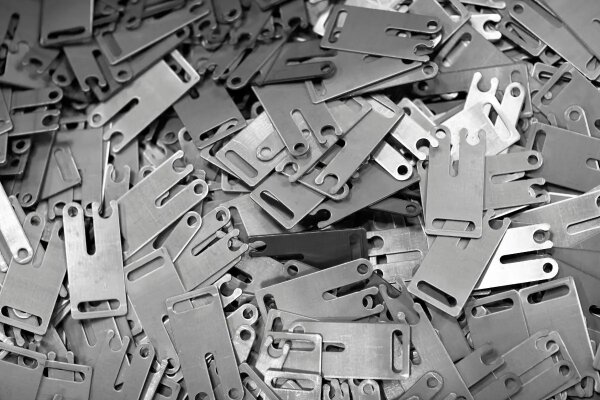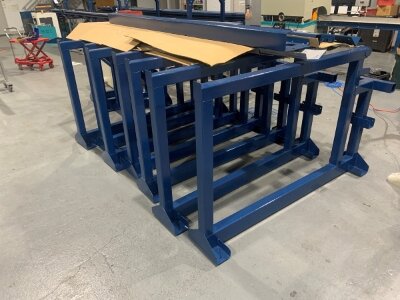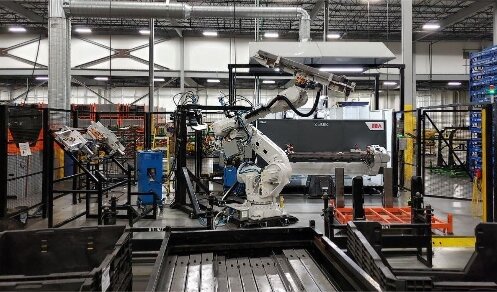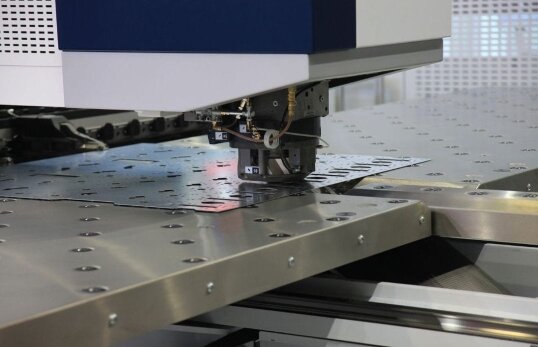Do you need help to produce complex metal parts quickly and cost-effectively? Traditional manufacturing methods often need to catch up on intricate designs. Stainless steel 3D printing offers a solution, allowing for rapid prototyping and production of custom metal components with unprecedented precision.
Stainless steel 3D printing is transforming the manufacturing landscape. This innovative technology enables the creation of complex geometries, reduces material waste, and shortens production times. It benefits industries requiring high-performance, corrosion-resistant parts in small to medium quantities.
This guide will explore the ins and outs of stainless steel 3D printing. We’ll cover everything from the basics to advanced applications, helping you unlock its full potential.
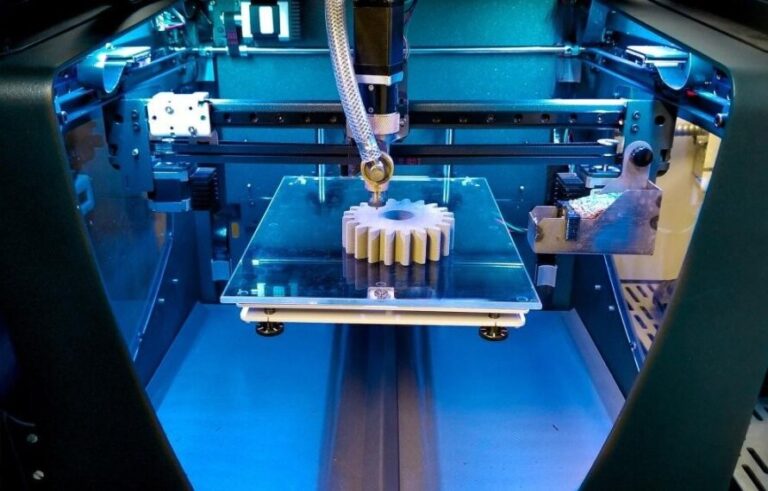
Understanding Stainless Steel in 3D Printing
What is Stainless Steel 3D Printing?
Stainless steel 3D printing is an additive manufacturing technique. It builds metal parts layer by layer using powdered stainless steel. A high-powered laser melts and fuses the powder particles. This process creates solid, three-dimensional objects based on digital designs.
The technology offers several advantages:
- Complex geometries
- Reduced material waste
- Faster prototyping
- Customization at scale
Types of Stainless Steel Used in 3D Printing
The 3D printing industry relies heavily on two main types of stainless steel: 316L and 17-4PH. Each offers unique properties that make them suitable for different applications. Let’s take a closer look at these materials and their characteristics.
Stainless Steel 316L
316L stainless steel stands out for its exceptional corrosion resistance. This austenitic steel contains molybdenum, which enhances its ability to withstand harsh environments. Critical features of 316L include:
- Excellent resistance to pitting and crevice corrosion
- High flexibility and formability
- Good weldability
- Non-magnetic properties
- Biocompatibility
These properties make 316L ideal for various applications:
- Medical implants and surgical instruments
- Marine equipment and structures
- Chemical processing equipment
- Food and pharmaceutical machinery
In 3D printing, 316L produces parts with high density and smooth surfaces. Its good flowability as a powder allows for detailed, complex geometries. The material’s corrosion resistance remains intact after printing, making it valuable for prototypes and end-use parts.
Stainless Steel 17-4PH
17-4PH belongs to the precipitation-hardening stainless steel family. It offers a unique combination of high strength and moderate corrosion resistance. Key characteristics include:
- High tensile strength and hardness
- Good toughness
- Excellent fatigue properties
- Magnetic properties
- Heat treatability for tailored mechanical properties
These features make 17-4PH suitable for various demanding applications:
- Aerospace components
- Turbine blades
- Gears and shafts
- Valve parts
- High-strength fasteners
In 3D printing, 17-4PH allows solid and functional parts to be produced. The material responds well to post-processing heat treatments, achieving the desired mechanical properties. This versatility makes it popular for prototyping and end-use components in industries requiring high-strength parts.
Material Properties and Their Impact on 3D Printing
The properties of stainless steel greatly influence the 3D printing process:
- Thermal conductivity affects cooling rates and part warping.
- Particle size distribution impacts powder flowability and final part density.
- Melting temperature determines the required laser power and print speed.
These factors must be carefully controlled to produce high-quality printed parts.
Stainless Steel Powder for 3D printing
Stainless steel 3D printing commonly uses atomized metal powder, which has the following characteristics:
- Good fluidity
- High bulk density
- Spherical shape
- Uniform particle size distribution
- Low oxygen and nitrogen content
The particle diameter of stainless steel powder used for additive manufacturing is about 15 to 45μm. Too fine metal powder increases friction between each other and deteriorates fluidity.
3D Printing Technologies for Stainless Steel
Stainless steel 3D printing has revolutionized manufacturing. Several technologies enable the creation of complex stainless steel parts. Each method offers unique advantages and challenges. Let’s explore these technologies and their recent advancements.
Overview of 3D Printing Methods
Three leading technologies dominate stainless steel 3D printing: Direct Metal Laser Sintering (DMLS), Selective Laser Melting (SLM), and Binder Jetting. Each uses different approaches to create metal parts.
Direct Metal Laser Sintering (DMLS)
DMLS uses a high-powered laser to sinter metal powder particles. The process works as follows:
- A thin layer of metal powder is spread across the build platform
- The laser selectively melts the powder according to the 3D model
- The build platform lowers, and a new powder layer is applied
- The process repeats until the part is complete
DMLS produces fully dense parts with excellent mechanical properties. It’s ideal for creating complex geometries and internal structures.
Selective Laser Melting (SLM)
SLM is similar to DMLS but fully melts the metal powder. The process steps are:
- A layer of metal powder is spread on the building platform
- A high-powered laser fully melts the powder in specific areas
- The platform lowers, and a new powder layer is added
- The process continues layer by layer
SLM creates parts with high density and strength. It’s suitable for producing functional components with intricate designs.
Binder Jetting
Binder Jetting uses a liquid binding agent to join metal powder particles. The process involves:
- Spreading a layer of metal powder on the build platform
- Depositing droplets of binding agent in specific areas
- Lowering the platform and adding a new powder layer
- Repeating until the part is complete
- Sintering the part in a furnace to achieve total density
Binder Jetting offers faster build speeds and larger part sizes. However, the parts may have lower density compared to DMLS or SLM.
Comparing Technologies: Pros and Cons
Each technology has its strengths and limitations:
DMLS/SLM:
- Pros: High part density, excellent detail resolution, mechanical solid properties
- Cons: Slower build speeds, smaller build volumes, higher costs
Binder Jetting:
- Pros: Faster build speeds, larger build volumes, lower costs
- Cons: Lower part density may require additional post-processing
The choice of technology depends on specific application requirements, production volume, and budget constraints.
Recent Advances in Stainless Steel 3D Printing Technologies
Stainless steel 3D printing continues to evolve. Recent advancements include:
- Improved laser systems for faster build speeds and better resolution
- Advanced powder handling systems for more uniform layer spreading
- In-situ monitoring for real-time quality control
- New alloy compositions optimized for 3D printing
- Hybrid systems combining additive and subtractive manufacturing
These innovations enhance part quality, reduce production times, and expand the range of possible stainless steel 3D printing applications.
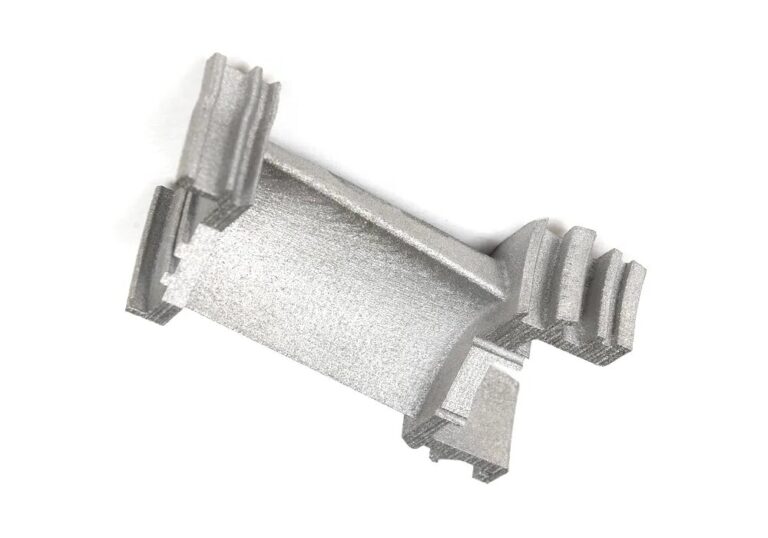
The Process of Stainless Steel 3D Printing
Stainless steel 3D printing involves several crucial stages. Each step contributes to the final product’s quality and performance. Let’s explore the entire process, from design to final testing.
Pre-Processing: Design and Preparation
The journey begins with design and preparation. This stage sets the foundation for successful printing:
- CAD modeling: Create a detailed 3D model of the part
- File optimization: Adjust the model for 3D printing
- Support structure design: Add supports for overhangs and complex geometries
- Slicing: Convert the 3D model into printable layers
- Parameter selection: Choose optimal printing settings
Proper pre-processing ensures printability and reduces the risk of failures during production.
Printing: Layer-by-Layer Construction
The printing phase brings the digital design to life:
- Powder bed preparation: Spread a thin layer of stainless steel powder
- Laser scanning: Melt the powder according to the sliced model
- Layer recoating: Add a new layer of powder
- Repetition: Continue the process until completion
This stage requires precise laser power control, scan speed, and layer thickness. These factors influence the part’s final properties and quality.
Post-Processing: Finishing and Treatment
After printing, parts undergo various post-processing steps:
- Powder removal: Clean excess powder from the printed part
- Support removal: Detach support structures
- Heat treatment: Relieve internal stresses and enhance properties
- Surface finishing: Polish, shot peen, or machine for desired texture
- Additional treatments: Apply coatings or perform other specialized processes
Post-processing improves the part’s appearance, mechanical properties, and functionality.
Applications of Stainless Steel 3D Printing
Stainless steel 3D printing has found its way into numerous industries. Its ability to create complex, customized parts with excellent properties makes it invaluable across various sectors. Let’s explore some critical applications.
Aerospace and Defense
The aerospace and defense industries benefit significantly from stainless steel 3D printing:
- Lightweight brackets and structural components
- Complex fuel nozzles for jet engines
- Customized turbine blades
- Rocket engine parts
- Drone components
These industries value the technology’s ability to produce substantial, lightweight parts with intricate internal structures. It also enables rapid prototyping and on-demand production of spare parts.
Medical Devices and Implants
Stainless steel 3D printing revolutionizes healthcare:
- Customized surgical instruments
- Patient-specific implants
- Dental prosthetics
- Orthopedic devices
- Complex medical tools
The biocompatibility of certain stainless steels and the ability to create porous structures make 3D printing ideal for medical applications. It allows for personalized solutions that improve patient outcomes.
Automotive and Transportation
The automotive sector leverages stainless steel 3D printing for:
- Prototype parts for testing
- Custom exhaust systems
- Heat exchangers
- Turbocharger components
- Specialized tools for manufacturing
This technology enables faster product development cycles and the production of complex parts that would be challenging to manufacture through traditional methods.
Industrial and Tooling Applications
In the industrial sector, stainless steel 3D printing finds use in:
- Injection molding tools
- Custom machine parts
- Heat-resistant components for furnaces
- Chemical processing equipment
- Specialized jigs and fixtures
Stain steel’s corrosion resistance and strength make it ideal for these demanding applications. 3D printing allows for quick production of replacement parts and custom tools.
Advantages of Stainless Steel 3D Printing
Stainless steel 3D printing offers numerous benefits over traditional manufacturing methods. These advantages make it an attractive option for various industries. Let’s explore the key benefits of this innovative technology.
Design Flexibility and Customization
Stainless steel 3D printing unleashes creativity in design:
- Complex geometries become possible
- Internal channels and lattice structures are easily created
- Parts consolidation reduces assembly requirements
- Rapid prototyping enables quick design iterations
- Customization for individual needs is cost-effective
This flexibility allows engineers and designers to optimize parts for performance, weight, and functionality. It opens up new possibilities in product design and innovation.
Material Strength and Durability
3D-printed stainless steel parts boast impressive mechanical properties:
- High tensile strength comparable to wrought materials
- Excellent corrosion resistance
- Good elasticity and toughness
- Heat resistance for high-temperature applications
- Fatigue resistance for cyclical loading
These properties make 3D-printed stainless steel suitable for demanding applications across various industries. The parts can withstand harsh environments and high stresses.
Speed and Efficiency of Production
Stainless steel 3D printing streamlines the manufacturing process:
- Reduced lead times for complex parts
- No need for tooling, saving time and costs
- On-demand production eliminates inventory issues
- Rapid prototyping accelerates product development
- Direct production from CAD models reduces errors
This speed and efficiency are precious for low-volume production and custom parts. It allows companies to respond quickly to market demands and reduce time-to-market.
Cost-Effectiveness in Complex Designs
For intricate designs, 3D printing can be more economical:
- Eliminates the need for expensive molds or dies
- Reduces material waste compared to subtractive methods
- Lowers labor costs for the assembly of complex parts
- Enables design optimization for weight reduction
- Allows for cost-effective customization and personalization
While the per-unit cost may be higher for large production runs, 3D printing produces complex, low-volume parts cost-effectively.
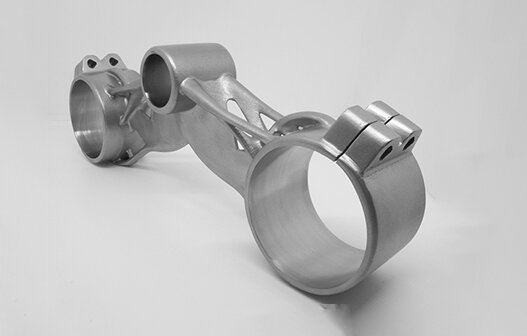
Challenges and Limitations
While stainless steel 3D printing offers numerous advantages, it also faces several challenges. Understanding these limitations is crucial for effectively implementing this technology. Let’s explore the main hurdles in stainless steel 3D printing.
Technical Challenges
Several technical issues can affect the quality and reliability of 3D-printed stainless steel parts:
- Residual stresses in printed parts
- Porosity and lack of fusion defects
- Anisotropic mechanical properties
- Limited build volumes in most printers
- Challenges in printing large, solid parts
These technical issues require careful process control and optimization to overcome. Ongoing research and development aim to address these challenges.
Warping and Distortion
Warping and distortion are common problems in stainless steel 3D printing:
- Thermal gradients cause uneven cooling
- Residual stresses lead to part deformation
- Large, flat surfaces are particularly prone to warping
- Distortion can affect dimensional accuracy
- Warped parts may require additional post-processing
Mitigating these issues involves careful design considerations, optimized support structures, and controlled cooling processes.
Surface Finish Quality
Achieving a smooth surface finish can be challenging:
- Layer lines are often visible on as-printed parts
- Stair-stepping effect on curved or angled surfaces
- Partially melted powder particles can adhere to surfaces
- Support structure removal can leave marks
- Post-processing is often required for smooth finishes
Improving surface quality typically involves additional post-processing steps, which can add time and cost to production.
Material and Process Costs
Cost remains a significant challenge in stainless steel 3D printing:
- High-quality metal powders are expensive
- Specialized equipment requires substantial investment
- Energy consumption during printing is high
- Post-processing adds to overall costs
- Skilled operators are needed for machine operation and maintenance
These factors can make stainless steel 3D printing less competitive for large-scale production of simple parts. However, for complex, low-volume parts, the technology can be cost-effective.
Conclusion
Stainless steel 3D printing represents a significant leap in manufacturing technology. It combines the versatility of additive manufacturing with the strength and durability of stainless steel. This innovative process opens up new possibilities in design and production across various industries.
Despite these challenges, the future of stainless steel 3D printing looks promising. Ongoing research and development continue to push the boundaries of what’s possible. As the technology matures, we can expect wider adoption and new applications.
FAQs
Can you 3D print in stainless steel?
Yes, you can 3D print in stainless steel. This process uses specialized metal 3D printing technologies like Direct Metal Laser Sintering (DMLS) or Selective Laser Melting (SLM). These methods create complex stainless steel parts by fusing metal powder layer by layer.
How does stainless steel 3D printing compare to traditional manufacturing methods?
Stainless steel 3D printing excels in creating complex geometries that would be difficult or impossible with conventional techniques. This technology allows for rapid prototyping and small-batch production without expensive tooling. However, traditional methods still have an edge for large-scale production in terms of cost and speed.
Is 3D printing metal cheaper?
The cost-effectiveness of 3D printing metal depends on various factors. 3D printing can be more economical than traditional methods for small batches or complex parts. It eliminates tooling costs and reduces material waste. However, for large-scale production, traditional manufacturing often remains more cost-effective.
How do advancements in 3D printing technology impact stainless steel printing?
Advancements in 3D printing technology continually enhance stainless steel printing capabilities. Improved laser systems increase precision and build speeds. Better powder handling mechanisms result in more consistent material properties. New software developments optimize design for additive manufacturing, leading to more substantial, lighter parts.
Hey, I'm Kevin Lee

For the past 10 years, I’ve been immersed in various forms of sheet metal fabrication, sharing cool insights here from my experiences across diverse workshops.
Get in touch

Kevin Lee
I have over ten years of professional experience in sheet metal fabrication, specializing in laser cutting, bending, welding, and surface treatment techniques. As the Technical Director at Shengen, I am committed to solving complex manufacturing challenges and driving innovation and quality in each project.

